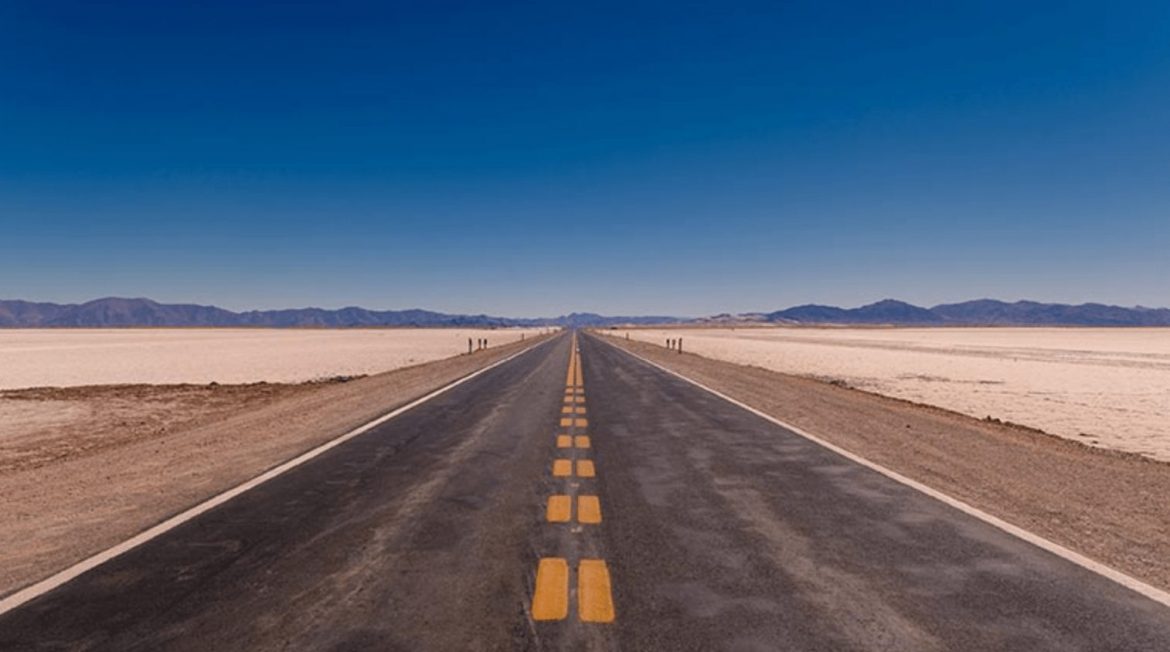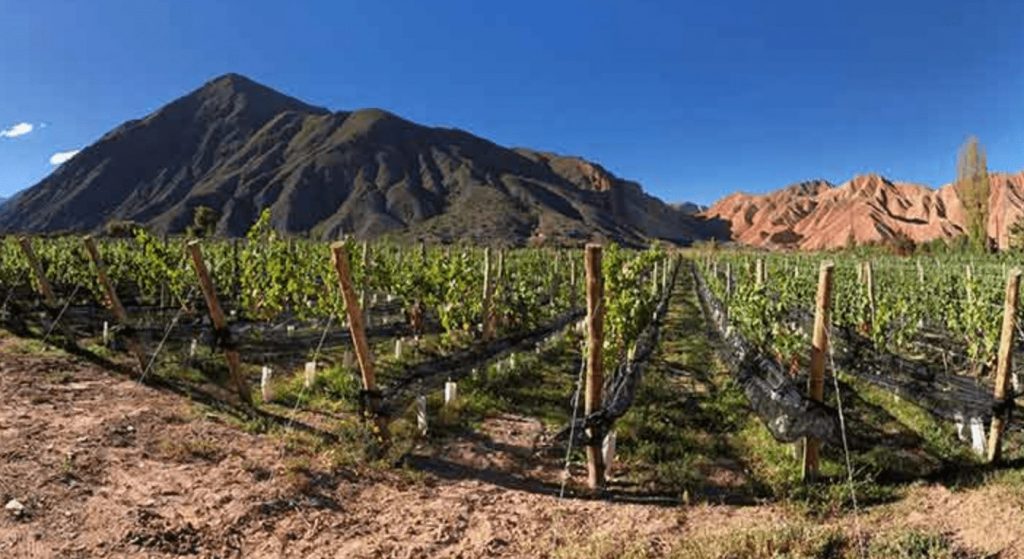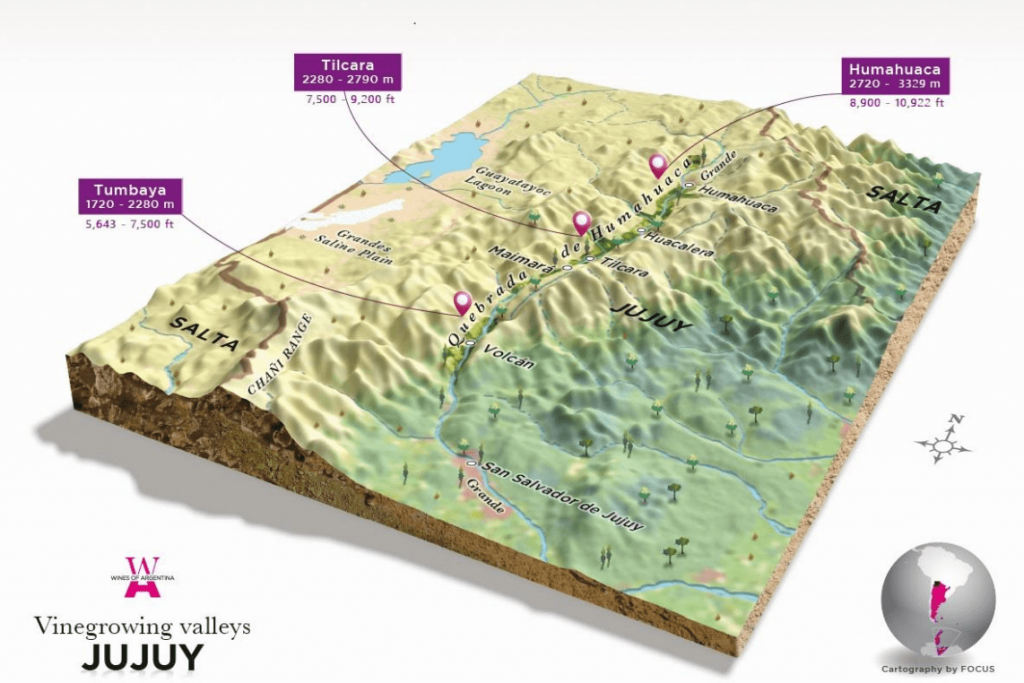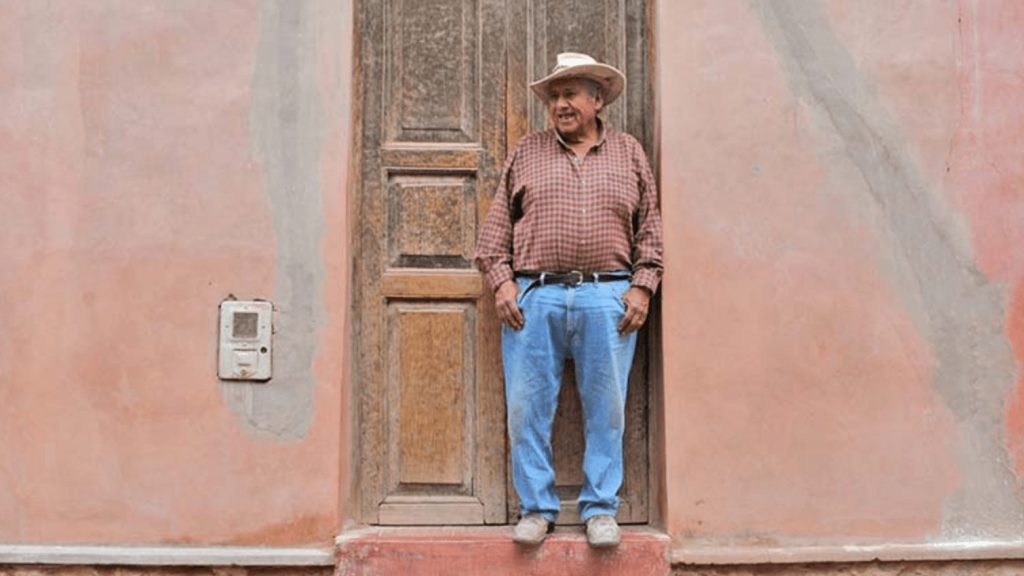At the northernmost tip of Argentina, Jujuy is in a world extreme. Bordering southern Bolivia and the edge of Chile’s Atacama region, Jujuy has both jungle and desert salt flats but it is largely dominated by the high plateau of the Altiplano which scales up to 5000 metres altitude.
The wine regions of Jujuy are in the narrow 80km-long mountain valley and canyon of Quebrada de Humahuaca and the warmer valleys in the south known as the Valles Templados. Although there aren’t many vineyards in Jujuy (the region has just 26 hectares), Jujuy claims some of the highest-altitude vineyards in the world. Within the Quebrada de Humahuaca, a newly designated GI since 2015, vineyards reach up to 3,329 metres altitude.
Better known for its sugar cane and tobacco plantations, commercial wine production in Jujuy only started in the early 2000s and although small the quality is promising. Malbec is king in Jujuy, accounting for over half the plantings, and with its extreme thermal amplitude, Malbec wines from Jujuy generally have intense colour, higher acidity and rich concentration.
Fact file on Jujuy wine region
- First planted in the 17th century. Modern plantings since 2003.
- Hectares planted: 26 hectares
- Number of wineries/vineyards: 23 growers
- Average vineyard size & production size: Small vineyards which average a hectare
- Regions & sub-regions: Quebrada de Humahuaca and Valles Templados
- Latitude: 23.1°S
- Longitude: 65.3°W
- Altitude: 1,720 to 3,329 metres altitude
- Geological description: Mountainous valleys.
- Soil formation & characteristics: Rocky, poor soils.
- Climate type and info: Continental, arid, mountainous.
- Avg. growing season day time: 24°C
- Avg. growing season night time: 8°C
- Diurnal range: 16°C
- Rainfall average: 140 mm per year. Concentrated in the summer
- Adverse climate conditions: Jujuy is incredibly dry, so water accessibility and irrigation is essential for any new vineyard in the region. There’s a lot of wind which can be managed with natural wind breaks and canopy management, and the wind also means the grapes rarely have health issues. High solar radiation requires careful canopy management so the grapes don’t burn.
- Most planted varieties: Over 90% of the vineyards in Jujuy are for red wine. Malbec accounts for almost half of the vineyards, followed by Syrah, Cabernet Sauvignon and Merlot. Sauvignon Blanc is the next most planted, followed by another red variety – Cabernet Franc. There are also some very small quantities of several other varieties being experimented with.
- Avg. vine age: 5 years old
- Vineyard management: VSP with drip irrigation.
Useful resources on Jujuy wine region:
- South America Wine Production
- Wines of Argentina (photos featured are sourced from Wines of Argentina)
Wineries in Jujuy wine region
Ayni Winery
Ayni winery is one of the highest altitude producers in the world, Ayni has vineyards up at 3,329 metres altitude. Open for tourism including nature walks, meditation and philosophy!
Bodega Fernando Dupont
Bodega Fernando Dupont is the largest wine producer in the region of Quebrada de Humahuaca in Jujuy, with a production of 23,000 litres per year.
Amanecer Andino
Alfredo González started to make wines in his free time 10 years ago in Quebrada de Humahuaca and he now runs his small family winery, Amanecer Andino, which is open for wine tastings with local charcuterie.
Viñas del Perchel
Viñas del Perchel is a family enterprise located at an altitude of 2,650 metres above sea level in the winemaking region of Quebrada de Humahuaca in Jujuy.
Huichara
Huichara is a four-hectare vineyard situated in the high altitude region of Quebrada de Humahuaca in Jujuy.
Jujuy travel highlights
One of the greatest travel highlights when visiting Jujuy is heading to the colourful canyon of the Quebrada de Humahuaca. A UNESCO heritage site, this natural valley has been an important trade route for over 10,000 years and there are traces of the hunter-gatherer tribes that inhabited the region as well as remains from the Incan Empire.
These archaeological sites are also accompanied by stunning landscapes where the vibrantly colourful mountains look like paintings. The range of mineral deposits in the hillsides is what gives them such striking colour changes and trail of Purmamarca is best known for for its Cerro de los Siete Colores (Hill of Seven Colours).
Ethnic markets, charming mountain villages and the Yungas forest are other attractions.
Jujuy related articles




